If you ever find your way to Anchorage, Alaska, visit the Musk Ox Farm in Palmer. According to their website, "The Musk Ox Development Corporation is a 501(c)(3) nonprofit organization. There are many ways you can be a part of the work that we do here at the Musk Ox Farm."
My new friend Cindy and Terrie twisted my rubber arm to see if I wanted to see musk ox. Of course, I'm down for that.
In the end, I bought yarn to support the farm but also left a $100 USD donation on behalf of The Crochet Crowd behind. You can also leave cash or credit card donations for the farm too.
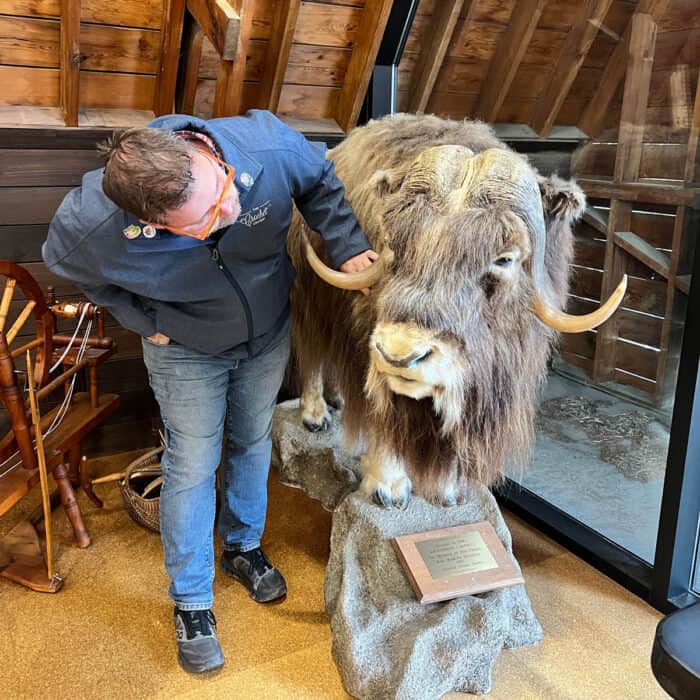
We planned to hit their yarn shop as they produce Qiviut (pronounced as Kiv-et) yarn from these majestic creatures. Quivut is the undercoat that naturally sheds from these beasts.
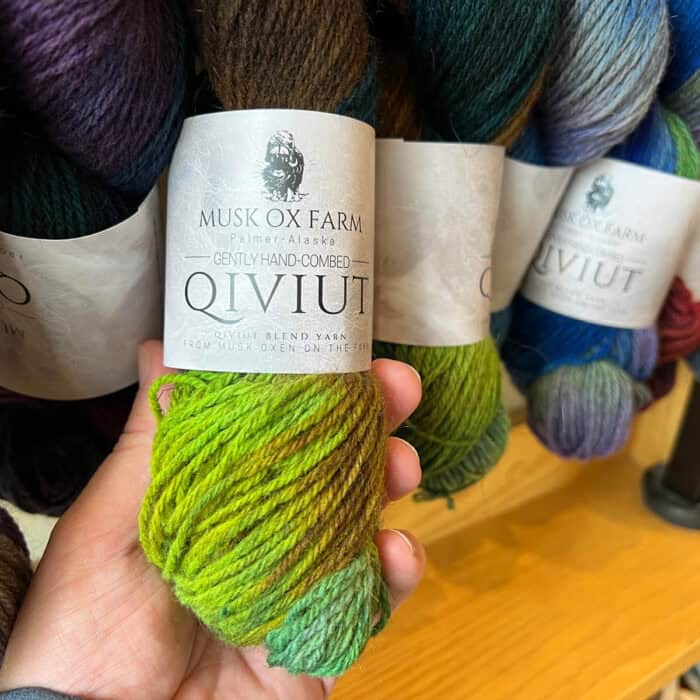
Vivian, a crocheter crowder, knew who I was, and we decided to do a tour of the farm. She was delightful from the minute we met her. The farm offers tours daily. She was our guide. You cannot be in the back paddocks without a guide.
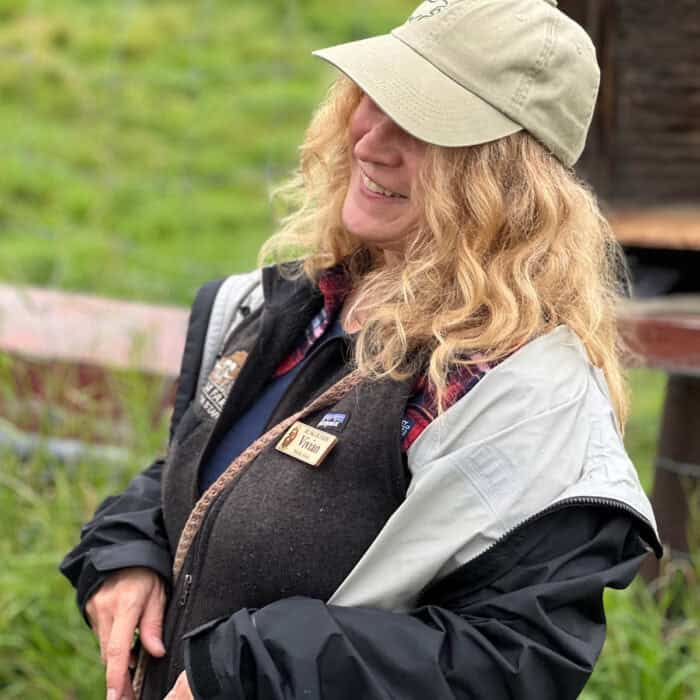
Seventy-Seven musk oxs live on this gloriously scenic farm. I mean, we tourists pay for this kind of view.
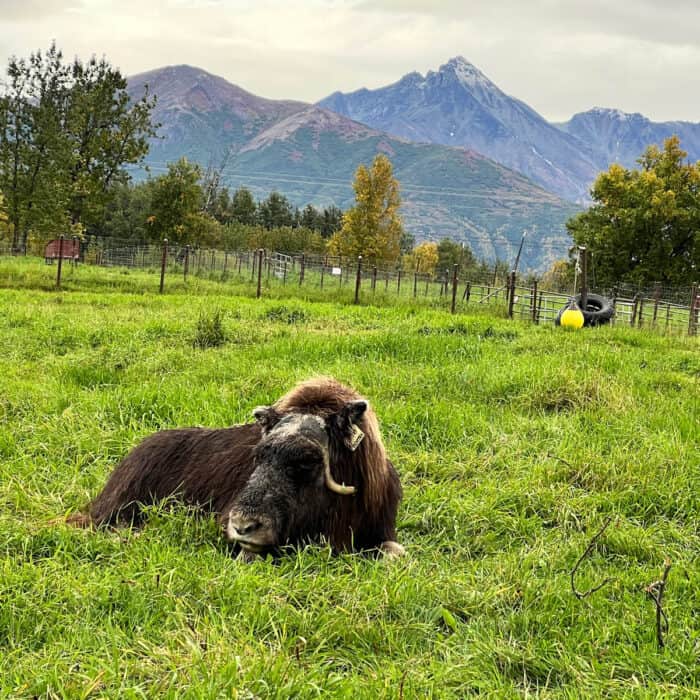
You cannot pet or get inside a pen with these docile creatures; shockingly, they are not that big. The saddest part of this adventure is that they were all killed off by humans as they are easy to kill. Like elephants and buffalo, they will form a circle to protect their young when in danger. They hold their ground. Their lack of running away made them easy to kill.
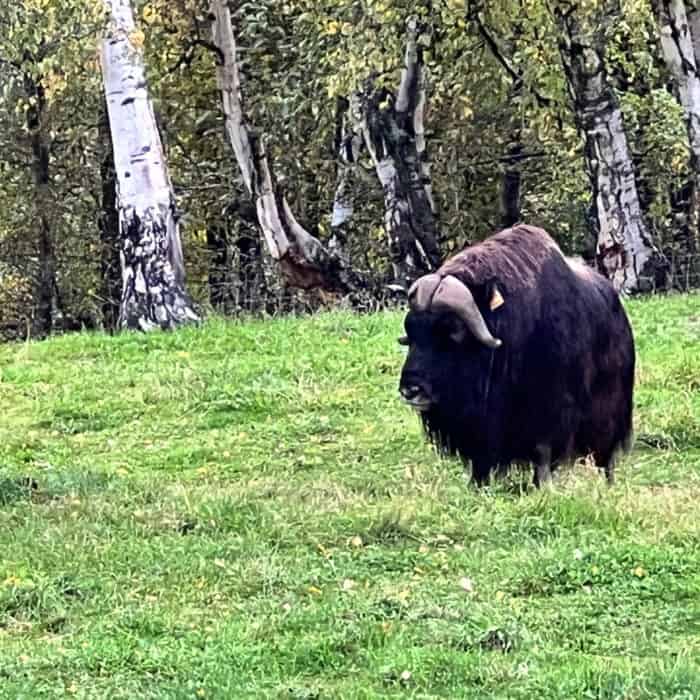
A herd of thirty musk oxen were brought from Greenland to let loose in Alaska, where they began repopulating. In many ways, most of the Alaskan musk ox today are descendants of the original thirty.

Alaskan musk oxen are dark brown or blackish. Canadian musk oxen are more caramel in colour. To keep the gene pool from turning into a mess, they bring in other musk oxen that are not related. The herd is monitored to ensure the breeding pens will not produce direct family offspring.
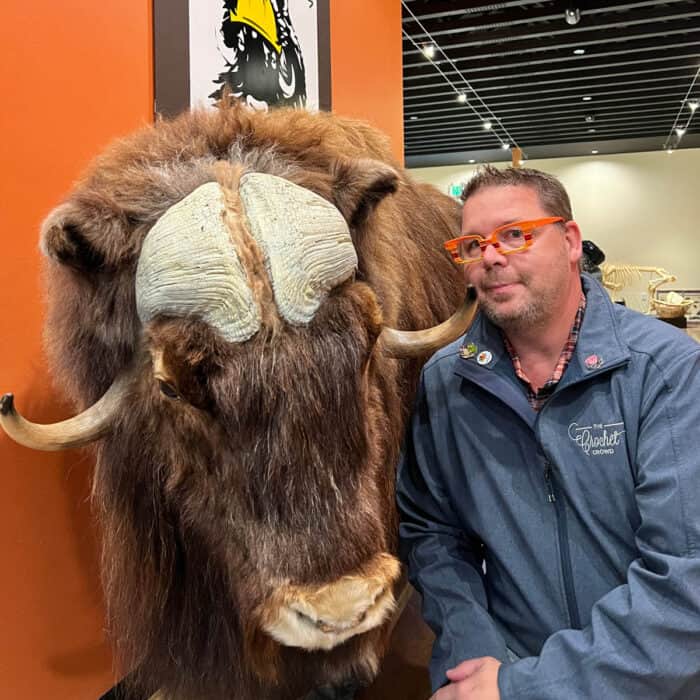
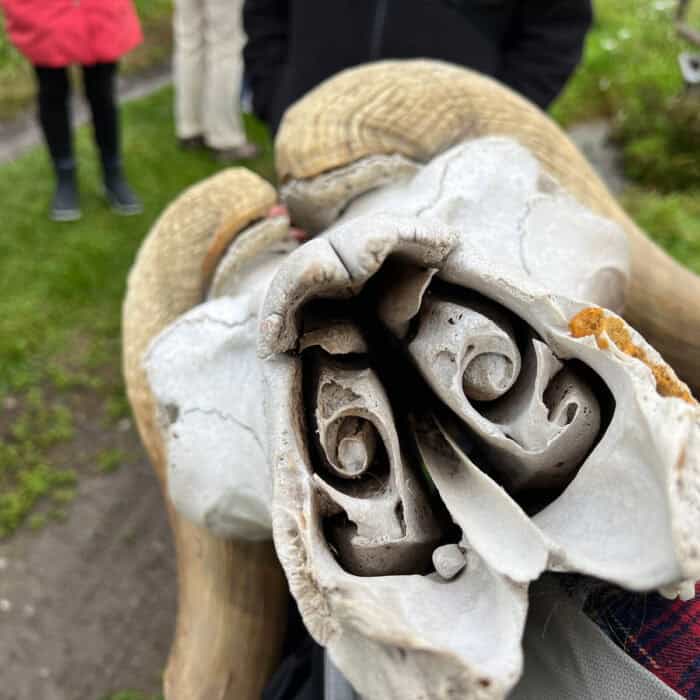
I found the skull fascinating. The nostril structure has a conch-like interior, which allows the incoming arctic air to circle inside the skull before going down to the lungs, warming up the frigid air.
Like the Inuit, who are known for their puffy facial appearance, their sinuses are adapted to warm up cold air instead of ingesting arctic cold air to the lungs.
Evolution is impressive because of the differences in our bodies in the region in which we live.
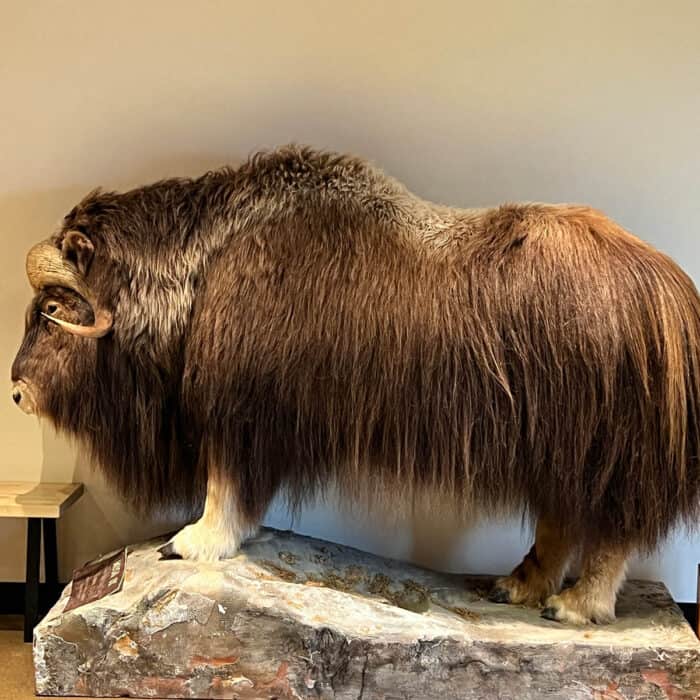
I couldn't help but think of PuppiDawg and Salti. Their skeleton structure isn't as big as it looks, and their coats give a significant illusion of size.
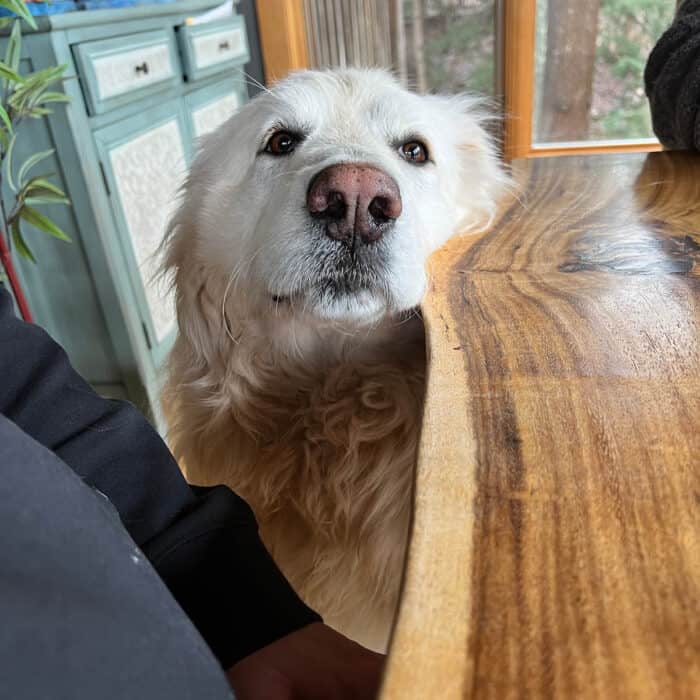
Quivit is from the undercoat. The exterior hair on the musk oxen is never cut at this farm or used to make the yarn.
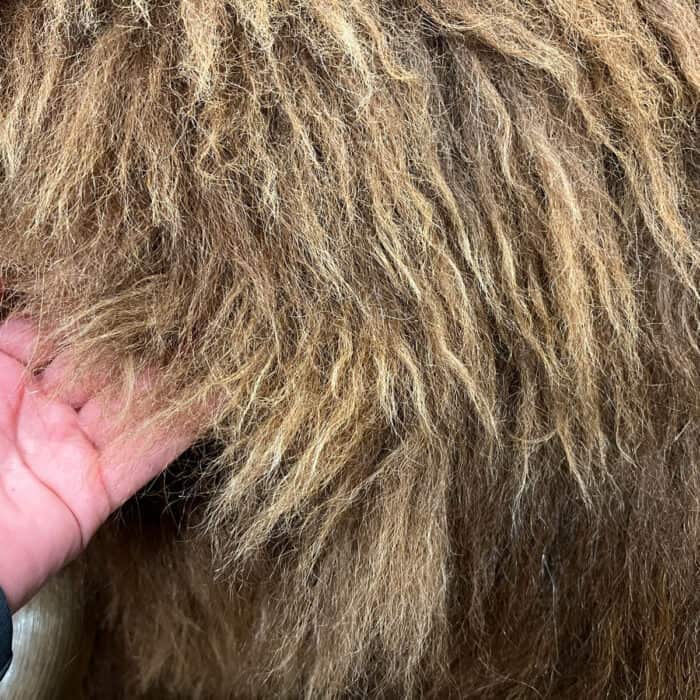
The hair is somewhat coarse and is called guard hair. Depending on the processing level, which dictates the price of the yarn. You may find guard hair that has been spun into the yarn.

With the herd of seventy-seven, several hundred pounds of qiviut is removed through

The musk oxs at the farm are gently combed; some take weeks as not all musk oxs want the combing, and they don't want to stress the animals out. They said the males enjoy the combing more.
Once the musk ox are combed, the qiviut is sent to Peru for processing.
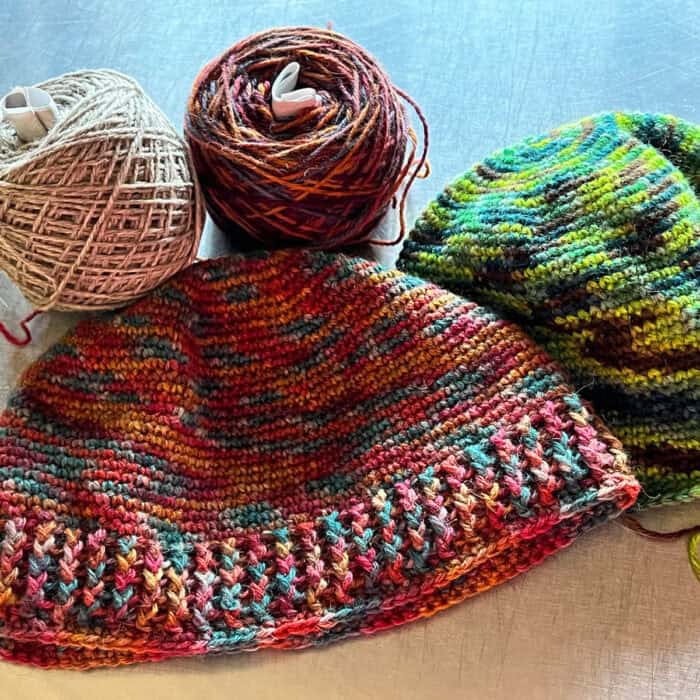
Vivian told me that, as a crocheter, I could make one hat out of what appears to be a small hank. We didn't have a pattern, but I used my retreat time to develop one. That will come later.
The pattern will go down to the bottom of the adult's earlobe to protect the ears.

I opted for the Qiviut Blend Yarn, which was approximately 195 yards and measured 2 ounces. It's 50% qivuit and 50% merino. It cost $60 USD. I used a 3.5 mm / US E crochet hook. My gauge was 11 sts x 11 rows = 2" x 2".
Due to the cost of this yarn, I designed a hat to use the maximum amount. This yarn is perfect for cold temperatures, keeping the musk ox warm. It will keep people warm, too.
The natural Qiviut without colouring added is $50 for the same product. Dyeing the yarn takes time and additional processing.
Honestly, I got both. I bought five hanks in all, and I feel great about it. I am in process of making special beanie hats for Daniel, Karen and I.
Cost Effectiveness
This yarn is rare, and its cost reflects the limited amounts of qivuit that can be produced annually. Knitters and crocheters will not use it on a whim. They will specifically choose a pattern or thought process to use with it.
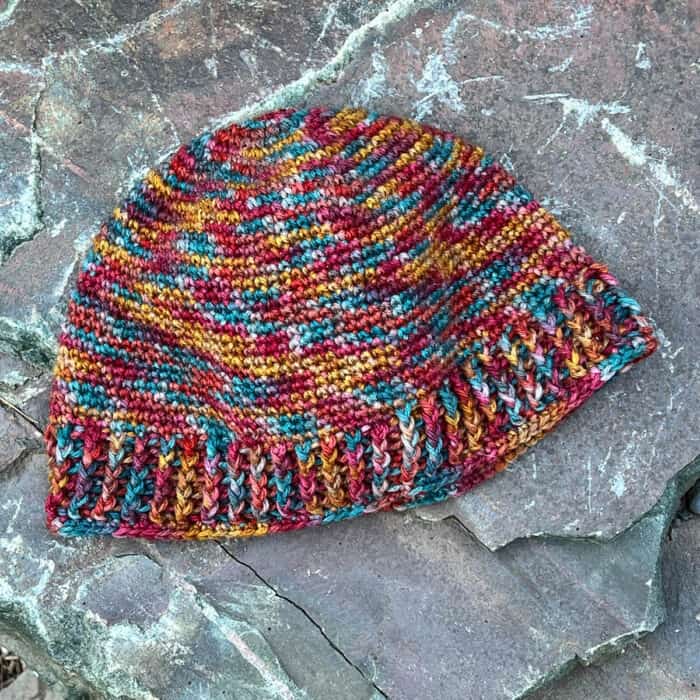
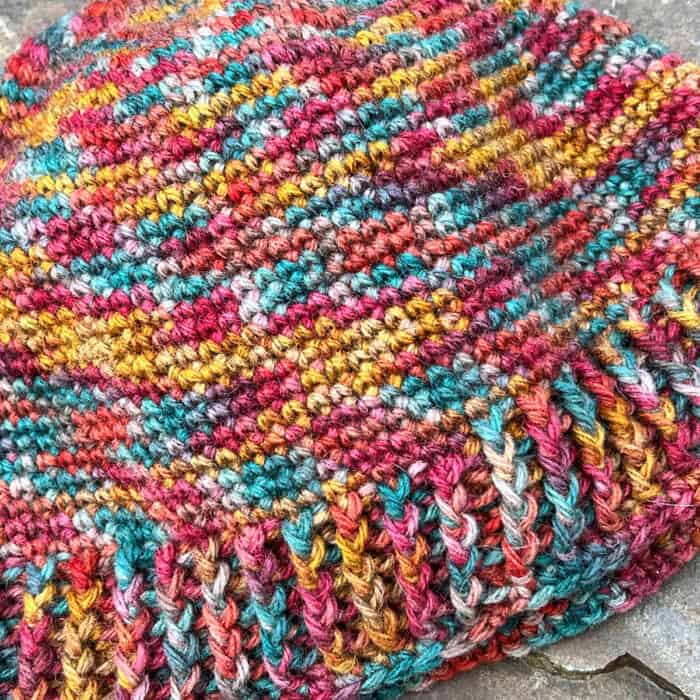
This pattern will form on the person's head and is not bulky in appearance. I thought Daniel would have wanted an authentic beanie without the padded brim. I did his in a colour called Northern Lights. I will write the pattern and then frog it back out to add in the brim he wants, just like the other one.

Retreat Space
After I had bought just one hank of this yarn and developed a pattern, a group of us took time off the retreat and returned to the Musk Ox farm for a second time. I didn't realize they had a meeting space/retreat space that could be rented. The balcony of the meeting space overlooks the paddocks.
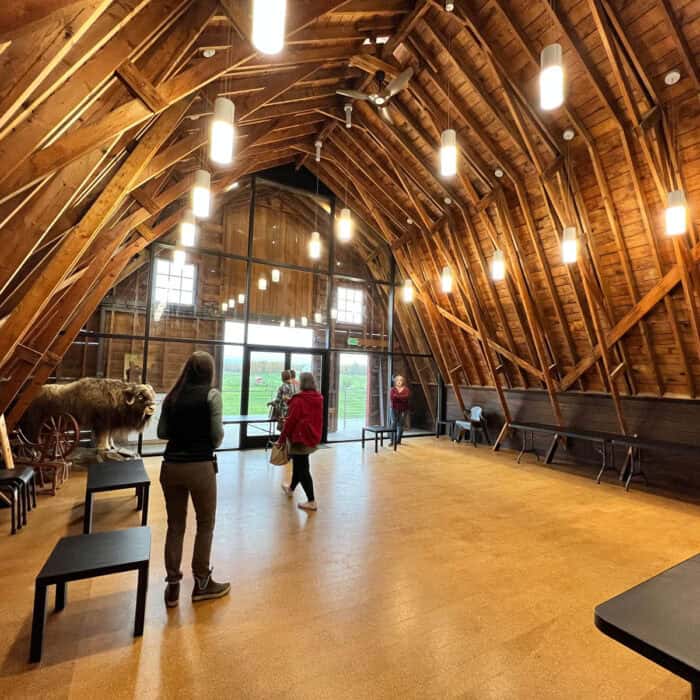
While in Alaska, thirty of us attended the Ididachain Crochet Retreat. I would strongly consider coming back to this region as an official Crochet Crowd Retreat and either making this space our home base, as the farm is currently building cabins, or just making this a place for a field trip, day adventure, and, of course, yarn shopping.
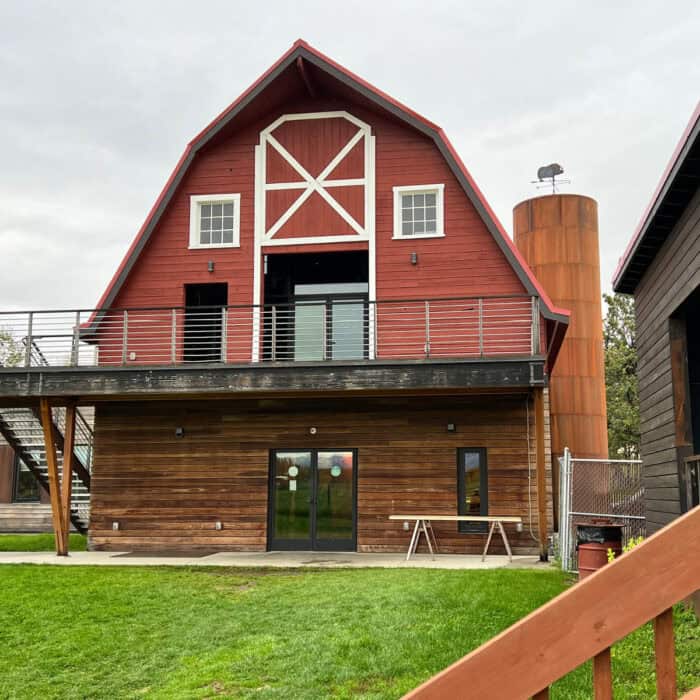
My friends here, from right to left, MG, Julia, Robin and Amy says YES, come on back to this location and let's hook out!
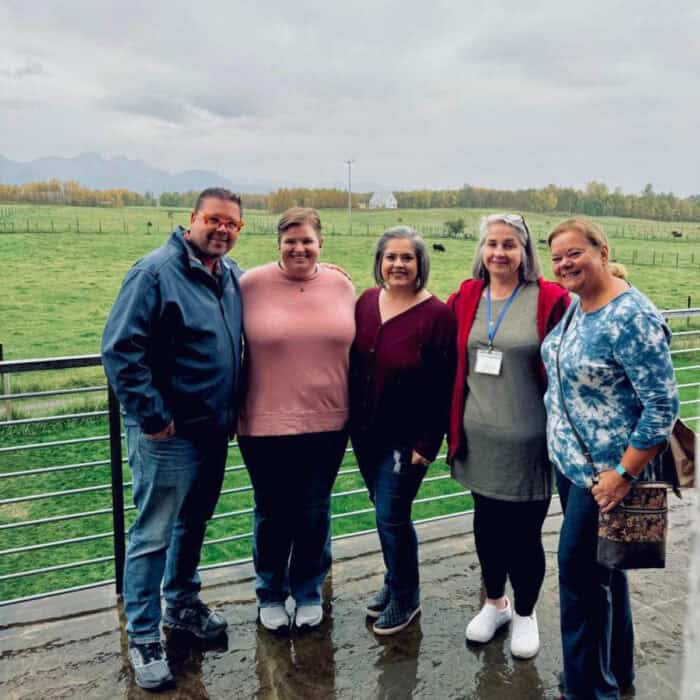
I learned so much during my tour; I know you will, too. Follow them on Facebook for stories and updates about the loveable Musk Ox.
When I was there in September 2024, it was breeding season, and we would see if the one male in a pen of four ladies would produce calves. He has to earn his way with his ladies. In some years, they don't always produce calves, as the males are unsuccessful. The babies are kept with their mothers and then separated once they are old enough, and then they are kept together as a new herd as they develop their friendships as a group at the same time.
As you will see on their website, to keep up with what's happening on the farm, we will have to stay tuned to their Instagram, Facebook, or YouTube. See their hours of operation. They are nearly open daily as the herd still needs tendering love.
Join the herd and hear the stories. It's one of the strongest memories of my short time in Alaska.
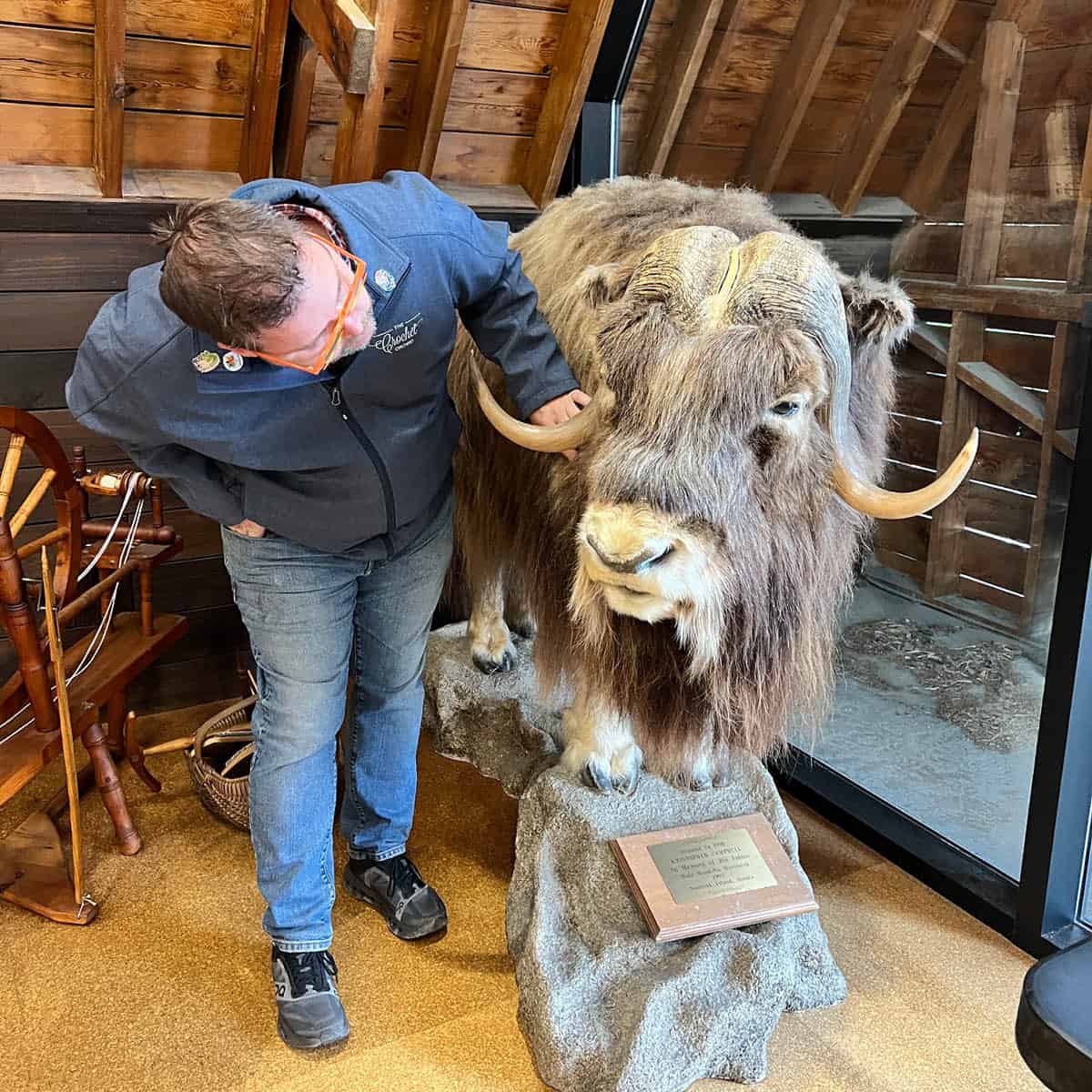
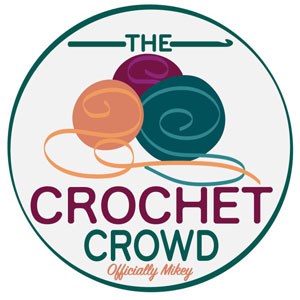
Pansy Rose says
You share some of the most interesting things. Thank you.